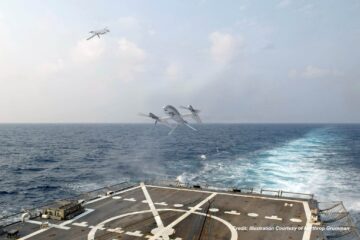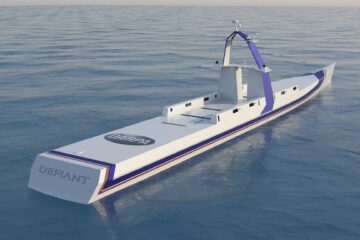Goliath grouper, black sea bass, and snapping shrimp, along with bioluminescent plankton and other microorganisms, are set to be the unlikely heroes of DARPA’s Persistent Aquatic Living Sensors (PALS) program. Five teams of researchers are developing new types of sensor systems that detect and record the behaviors of these marine organisms and interpret them to identify, characterize, and report on the presence of manned and unmanned underwater vehicles operating in strategic waters. This new, bio-centric PALS technology will augment the Department of Defense’s existing, hardware-based maritime monitoring systems and greatly extend the range, sensitivity, and lifetime of the military’s undersea surveillance capabilities.
DARPA first announced the PALS program in February 2018 with the goal of incorporating biology into new solutions for monitoring adversary movements across the seemingly endless spaces of the world’s oceans and seas. Ubiquitous, self-replicating, self-sustaining sea life is adaptable and highly responsive to its environment, whereas maritime hardware is resource intensive, costly to deploy, and relatively limited in its sensing modalities. According to PALS program manager Lori Adornato, “Tapping into the exquisite sensing capabilities of marine organisms could yield a discreet, persistent, and highly scalable solution to maintaining awareness in the challenging underwater environment.”
The DARPA-funded PALS teams must develop or apply technologies to record stimulus responses from observed organisms, and develop combined hardware and software systems that interpret those responses, screen out false positives, and transmit analyzed results to remote end users. The teams’ solutions will incorporate technologies such as hydrophones, sonar, cameras, and magnetic, acoustic, and kinetic sensors.
- The team led by Northrop Grumman Corporation, under principal investigator Robert Siegel, will record and analyze acoustics from snapping shrimp and optical activity by bioluminescent organisms.
- The team led by the Naval Research Laboratory, under principal investigator Lenny Tender, will integrate microbial organisms into a sensing platform to detect and characterize biological signals from natural microorganisms that respond to the magnetic signatures of underwater vehicles.
- The team led by Florida Atlantic University, under principal investigator Laurent Cherubin, will record and analyze vocalization cues from goliath grouper in tropical and subtropical environments.
- The team led by Raytheon BBN Technologies, under principal investigator Alison Laferriere, will use snapping shrimp as sources of opportunity for long-range detection, classification, and tracking of underwater vehicles.
- The team led by the University of Maryland Center for Environmental Science, under principal investigator David Secor, will tag black sea bass with sensors to track the depth and acceleration behaviors of schools of fish that are perturbed by underwater vehicles.
DARPA is also funding the Naval Undersea Warfare Center, Division Newport, under principal investigator Lauren Freeman, to develop a seafloor system that uses a hydrophone array and acoustic vector sensor to continuously monitor ambient biological sound in a reef environment for anomalies. The system will analyze changes in the acoustic signals radiated by the natural predator-avoidance response of coral reef ecosystem biota, which could offer an indirect mechanism to detect and classify underwater vehicles in near-real time.
DARPA conceived of PALS as a four-year research program with the expectation that researchers will be able to publish results for review by the broader scientific community. However, if DARPA identifies any of the data, results, or technical specifications as controlled unclassified information, DARPA will require the PALS researchers to protect them to prevent proliferation outside of official channels.






